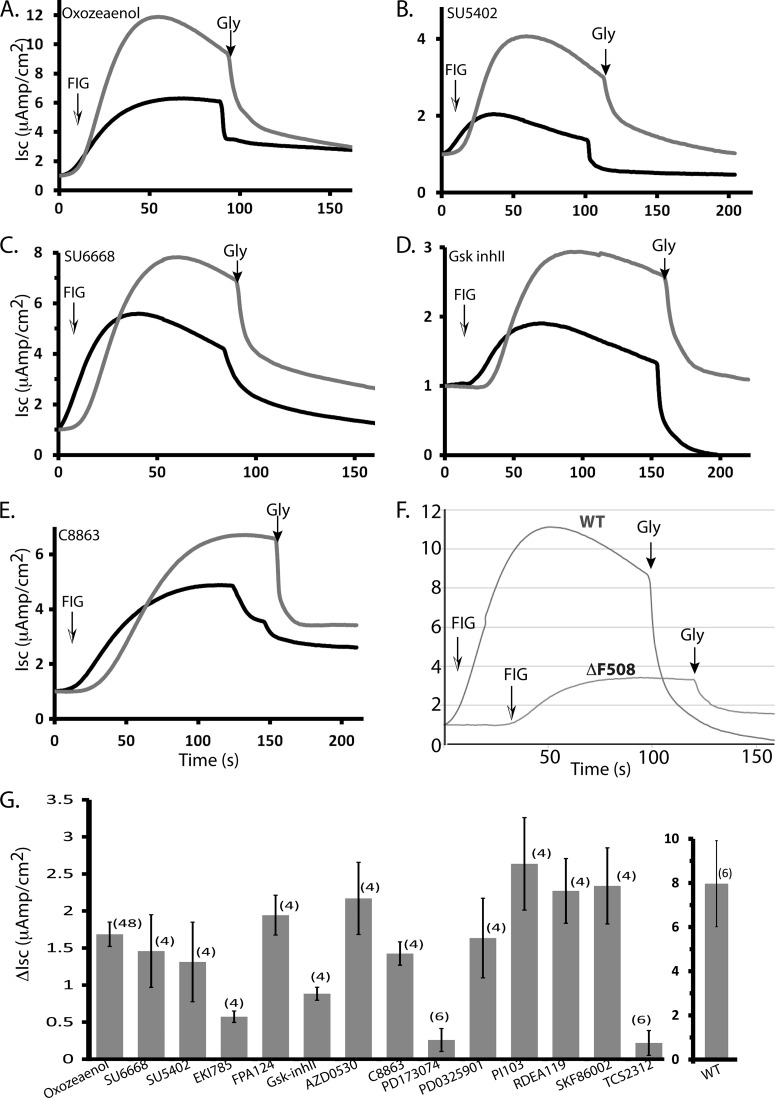Fig. 4.
Effect of compounds treatment on the ΔF508-CFTR channel activity in the MDCK cells stably expressing ΔF508-CFTR. Representative short-circuit current (Isc) traces of MDCK ΔF508-CFTR monolayers treated with vehicle (DMSO) alone, or 10 μm (A) (5Z)-7-oxozeaenol, (B) SU5402, (C) SU6668, (D) GSK-3β Inhibitor II, (E) 7-Cyclopentyl-5-(4-phenoxyphenyl)-7H-pyrrolo[2,3-d]pyrimidin-4-ylamine (C8863), for 48 h prior to analysis in Ussing chambers. ENaC sodium channels were inhibited with 10 μm amiloride; non-CFTR chloride channels were blocked with 250 μm DNDS. CFTR currents were stimulated with FIG (25 μm Forskolin, 25 μm IBMX and 50 μm Genistein) at time 0 and after the indicated times (arrows) inhibited using 15 μm GlyH-101 (Gly). F, Representative short-circuit currents mediated by MDCK cells that stably express WT-CFTR. G, Summary of the increase in short-circuit currents (ΔIsc) in MDCK cells stably expressing ΔF508-CFTR that were treated by the analyzed compounds (relative to DMSO vehicle control alone). Data are mean ± S.E. (n): number of experiments.

